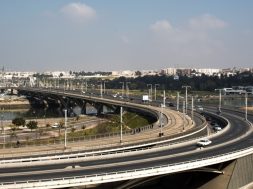
Effective adaptive cooling comfort for airports can be attained at higher temperatures,combine with advanced air movement velocities.
Today, aviation has a crucial role to play in transportation of goods as well passenger travel for business and leisure. The Indian aviation industry grew by 18.6 per cent in the year 2018 with 13.9 crores of domestic air travellers as against 7 per cent growth globally. In fact, India is ahead of China, in terms of growth. The aviation industry requires air-conditioning for its airports and refrigeration for perishable goods.
Right equipment
The selection of equipment becomes critical to meet the cooling requirements. Most of the present design considerations are chilled water coupled with air-handling units, to meet all the cooling demands. “Adopting systems like VRF and Variable Speed Ducted Systems for offices, lounges and closed shops will help. Further, maintaining higher temperatures and stratification in open areas will help reduce the energy consumption. Concepts of IoT coupled with the HVAC Systems will be an effective monitoring tool,” says J M Bhambure, Advisor Technical, Blue Star Limited.
If the HVAC system is designed keeping in mind the varying load pattern and a system or equipment which works efficiently at part loads while also providing the required output, then that can go a long way in reducing the overall life cycle cost and in turn the carbon footprint. “Airports have sensitive installations like the communications and radar area which require high level of immunity from electrical noise. Thus, special care should be taken while selecting the equipment and only very low RFI and harmonics producing equipment should be selected. This will help in avoiding the oversizing of transformers and cables and increase the overall life of the system, says Padi Sukumaran – Head, Drives Business Unit, ABB India.
HVAC contributes for about 40-50 per cent of total energy consumption, careful selection and operation of equipment at best efficiency point becomes vital in reducing operating costs and carbon footprint, informs Nilesh Shah, Vice President-Business Planning, Marketing & Export Sales, Johnson Controls-Hitachi Air Conditioning India Limited.
Right selection and optimum use of equipment and thereby reducing operational costs and carbon footprints. Use of VRF System instead of central plant in fluctuating load areas as the part load performance of VRF System is much better compared to Chilled water system. Selection of Chillers with HT Motors help in reduction of operating costs by 4-5 per cent by reducing transformer losses. In chiller condenser tubes, scaling starts within 72 hours of operation and de-rates the efficiency of chiller. Even 15 days of operation can de-rate the chiller efficiency by about 8 – 10 per cent and de-rates further in continuous operation. So, chillers with Automatic tube cleaning system for condensers help us in maintain design efficiency.Selection of chiller combinations with Screw chiller (multiple compressors) and Centrifugal compressor to operate the chillers in best efficiency point in wide range of loads.
Maintaining efficiency despite passenger traffic surge
Booster Cooling Systems
It is common that the passenger traffic is not uniform throughout the day. It is important to identify areas such as the immigration counter and boarding gate where passengers have to wait for long and would expect comfort. These areas will require equipment that has a faster response time to remove heat. “The design can be a Blanket Cooling System to meet minimum to middle-level cooling demand with fast acting Booster Cooling Systems. These systems will be activated automatically by integrating them with IoT, by using multiple parameters like passenger movement, temperature and humidity. Considering that temperature and humidity have slower response, passenger movement will become effective,” adds Bhambure.
Intelligent VFDs
“Today, intelligent VFDs are available which sense the cooling requirement (depending upon the load traffic) and accordingly vary the speed of the HVAC system to maintain desired level of comfort. As per the affinity law, a slight reduction in speed gives a very large amount of reduction in consumed power, thus resulting in high energy savings, says Sukumaran.
“If VFDs are installed at all the equipment like Chiller Compressors, AHU, Pumps, Cooling Towers etc. then a very large amount of energy savings can be achieved,” he adds.
Variable Air-Volume Systems
In order to maintain effective HVAC Systems to handle sudden surge in passenger traffic, HVAC systems to be incorporated with VAV (Variable Air-Volume) in Air System to control Zone-wise temperature Controls according to changes in demand, adds Shah. Pressure drop monitoring system across filters to schedule maintenance activities according to filter condition and thereby to ensure intended airflow. CO2 sensors in conditioned areas to monitor CO2 levels and to maintain enough fresh Air for passengers based on surge in traffic.
VRF Systems can be operated during excess load as a combination with main AHUs and as a standalone in low load condition as part load efficiency of VRF system is better and air circulators for proper air distribution and to ensure enough air circulation.
Design aspects for better cooling
IoT will play a big role
The design consideration should be based on the geographical location of airports. In dry and composite climate, a combination of evaporative cooling and compressor-based technologies, will help. The technologies should be used after identifying the different zones and their requirements in terms of passenger traffic, both, inbound and outbound, waiting areas, etc. “Concept of adaptive cooling, whereby comfort can be achieved at higher temperatures, combined with higher air movement velocities, will be effective. Airport air-conditioning should be self-learning and self-acting and IoT will play a big role. IoT is a promising technology which is evolving very fast and will play a big role in designing the HVAC Systems. Approximately 2 to 3 per cent of energy is saved per degree increase in the conditioned space temperature,“ informs Bhambure.
Use of glass buildings and facades
Climatic conditions in India and those in western countries are quite different. Hence, the architecture and design criteria that is being used there cannot be applied here. “One of the very popular designs is the use of glass buildings and facades. In a tropical country like India, this leads to heavy loading on the cooling system,” opines Sukumaran.
The new ACH580 series of variable frequency drives (VFDs) provide the quality, reliability, and energy savings one expects, and are easy to use and safe to maintain. All one need to do is to set the drive up, and then focus on what counts.
Major benefits include all hardware in one package, wide power range, multiple enclosure types available, main switch option, easy to select, install, commission and use, HVAC-specific features integrated as standard, Intuitive control panel with optional Bluetooth capability for better accessibility, various languages and communications built inside, reliable connectivity with major automation and control systems, control of a wide range of motors for any HVAC application, based on ABBs all-compatible drive platform, and optimised energy efficiency and wide availability and support.
Right orientation of glass – a must
Right orientation of glass and use of high-performance glass will help in reducing heat loads and in turn reduction of capital and operation costs of air conditioning system, says Shah. Selection of building materials with low conductivity. Monitoring indoor air quality and connecting with demand control ventilation. Doing CFD analysis for air flow pattern and accordingly selecting duct routing and ADP fixtures, thereby ensuring enough air circulation in conditioned area and use of air circulators for efficient air distribution.
Concepts of IoT coupled with the HVAC Systems will be an effective monitoring tool.
J M Bhambure, Advisor Technical, Blue Star Limited
Special care should be taken while selecting the equipment and only very low RFI and harmonics producing equipment should be selected.
Padi Sukumaran – Head, Drives Business Unit, ABB India
Right orientation of glass and use of high-performance glass will help in reducing heat loads and in turn reduction of capital and operation costs of air conditioning system.
Nilesh Shah, Vice President-Business Planning, Marketing & Export Sales, Johnson Controls-Hitachi Air Conditioning India Limited
Cookie Consent
We use cookies to personalize your experience. By continuing to visit this website you agree to our Terms & Conditions, Privacy Policy and Cookie Policy.









